SillyTavern’s Stable Diffusion: AI Fun

Discover the AI fun at SillyTavern’s Stable Diffusion. Explore the latest innovations in sillytavern stable diffusion on our blog!
Exploring SillyTavern's Stable Diffusion
SillyTavern's Stable Diffusion encompasses a diverse range of NLP capabilities, including tts, embedded with the stable diffusion api for seamless integration. The use of Python-based sd backend and frontend toolify further enhances the experience across various platforms, while maintaining compatibility with chromadb and Visual C for efficient development. Silly tavern's stable diffusion is also optimized for GPU utilization, ensuring swift processing and leveraging PyTorch's advanced functionalities. Additionally, built-in authentication protocols and HTTP integration with Microsoft's chat and Google's TTS are seamlessly supported.
Unfolding the AI Fun with SillyTavern
Unleashing AI fun with SillyTavern involves experiencing interactive AI characters within the stable diffusion environment. The stable diffusion backend ensures stable functionality, facilitating AI image generation through the sillytavern extras server and comfyUI. Users can unleash AI fun via the stable diffusion webUI, experiencing AI-generated images through chatgpt functionality. This provides an engaging and interactive user experience, utilizing the stable diffusion API to generate AI content seamlessly.
Brief about SillyTavern's Stable Diffusion Technology
With the aim of enabling easy identification of specific functionalities, stable diffusion's module names play a significant role. Additionally, the extras API for stable diffusion empowers users to leverage additional functionalities for generated images. SillyTavern, the guide's creator, has diligently ensured mobile support within stable diffusion. Delving into the stable diffusion repository provides access to a wide array of module names and functionalities. Furthermore, the stable diffusion extras API repository offers supplementary functionalities tailored for image generation.

Detailed Study of Folders and Files
Within the stable diffusion backend, the directory structure comprises various essential subfolders and files. Understanding the significance of each folder and file is crucial for seamless operation. Dockerfile specifies the environment for the backend, while .editorconfig ensures consistent coding style. The .gitignore file is vital for excluding specific files from version control. Constants.py contains essential API keys and configuration settings. Each of these plays a crucial role in ensuring the smooth functioning of the stable diffusion API.
Significance of Docker in Stable Diffusion
Enabling the installation of an additional package for image generation, Docker plays a vital role in stable diffusion. The setup ensures stable functionality for generated images. Understanding the docker installation process in stable diffusion is crucial for image generation. Moreover, the docker functionality in stable diffusion allows access to generated images via stable diffusion webUI, command line, and mobile support. Embracing Docker in stable diffusion enhances accessibility and stability for the generated images.
Role of .editorconfig and .gitignore
Ensuring stable text generation functionality, the .editorconfig file plays a crucial role in the stable diffusion API. It effectively manages text generation by supporting the usage of .editorconfig for text generation. Meanwhile, the .gitignore file efficiently handles generated images, enabling stable image generation within the SD backend. Leveraging both files is essential for managing and supporting text and image generation within the stable diffusion API.
Understanding the Constants.py File
The stable diffusion's Constants.py file regulates default functionality, ensuring stable image generation. Access the file in the stable diffusion repository for image generation and understand its usage for generated images. The Constants.py file supports the stable diffusion webUI, command line, and mobile support, providing essential governance for stable diffusion operations.
SillyTavern Github — https://github.com/Cohee1207/SillyTavern
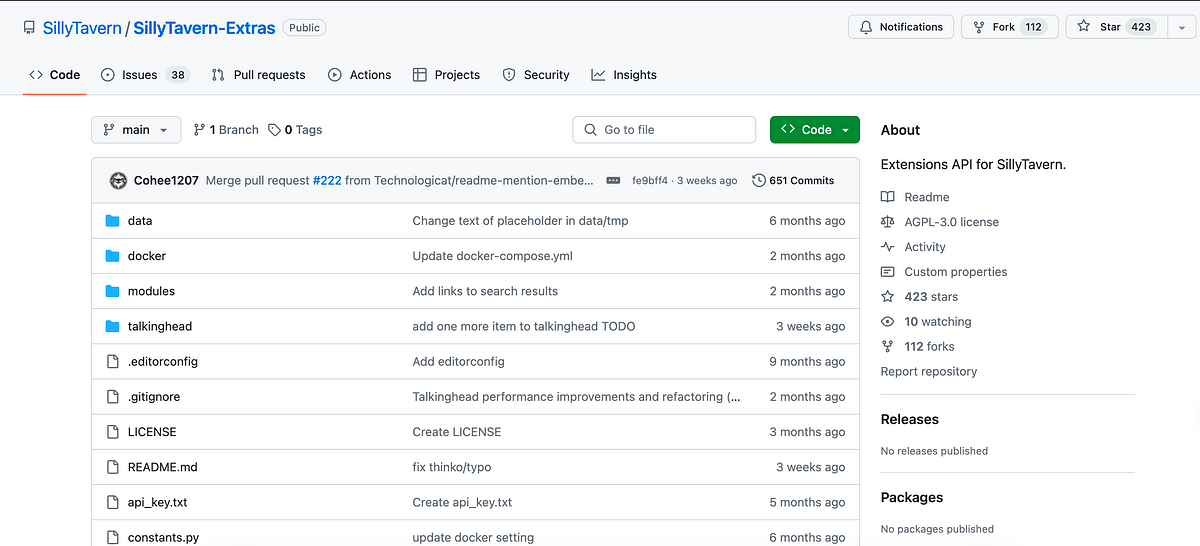
Decoding the Latest Commit
The latest commit brought significant improvements in the AI fun aspect of stable diffusion API. It involved updates to the visual c backend, as well as enhanced TTS functionality through Microsoft. Additionally, the commit included optimizations for GPU usage and incorporated new embeddings for better performance. The use of PyTorch in the frontend was also introduced, along with improvements in the chromadb toolify. These changes align with the continuous evolution of SillyTavern's stable diffusion technology, making it more adaptable and efficient.
Changes Brought in the Latest Commit
The latest commit in the stable diffusion repository brings enhancements to the AI fun aspect, ensuring stable functionality for AI-generated images. Exploring the repository allows understanding of the impact on generated images and improvements in the webUI. The commit introduces enhancements without creating any incompatibility, making it easier to use the stable diffusion API. These changes reflect the commitment to improving the stable diffusion backend and frontend, making it more user-friendly and efficient.
Improvements in the AI Fun Aspect
Stable diffusion's AI characters have undergone significant enhancements, greatly improving the user experience. The webUI for stable diffusion has also been upgraded, allowing for easier access to AI fun. Users can explore the stable diffusion repository to discover the latest improvements in the AI fun aspect, including enhanced functionality of the AI characters. These enhancements in the stable diffusion webUI have elevated the AI fun experience for users, making it more enjoyable and accessible.

Tracing Back the History
Exploring the evolution of SillyTavern's Stable Diffusion unveils its remarkable journey. From the inception to the latest advancements, each milestone reflects the innovation and commitment of the team. The gradual progression showcases the integration of cutting-edge technologies like visual C, SD backend, and PyTorch, enabling seamless AI fun. Additionally, the contributions from Microsoft, GitHub, and Google have elevated the capabilities of Stable Diffusion. Tracing back the history unveils how SillyTavern's relentless pursuit of excellence has shaped its progress in the AI domain.
Evolution of SillyTavern's Stable Diffusion
The developmental journey of SillyTavern's Stable Diffusion has resulted in its current state, demonstrating continual improvement and enhancement. This progress reflects the evolution of AI technology in the digital landscape and provides context for the tool's capabilities. SillyTavern's Stable Diffusion showcases the dynamic nature of AI development, highlighting its various evolutionary phases and the significance of AI technology in today's digital era.
Major Milestones Achieved
Reflecting on the journey of advancement, SillyTavern's Stable Diffusion has reached significant milestones, highlighting its impact in the AI domain. The attainment of these key milestones underscores the success and relevance of SillyTavern's Stable Diffusion, representing pivotal moments in its evolution. The milestones achieved reveal the progress and growth of SillyTavern's Stable Diffusion, showcasing its continuous development and impact in the field of AI.
Requirements for Running SillyTavern’s Stable Diffusion
To run SillyTavern’s Stable Diffusion, ensure compatibility with stable diffusion API, Visual C, SD backend, and TTS. Also, authenticate GitHub, verify embeddings incompatibility, and use PyTorch with Python frontend. Access using the terminal or browser, and handle incompatibility issues with Conda or pip. Be mindful of GPU, ChromaDB, and app compatibility, and resolve any HTTP or authentication problems. Lastly, stay updated with Microsoft, Google, and git for smooth operation.
Requirement Files Explained
Delving into the intricacies of the requirement files is crucial for deploying SillyTavern’s Stable Diffusion. Understanding their details elucidates the dependencies and serves as the foundation for its functionality. The files contain vital information fundamental to utilization, facilitating a comprehensive understanding of SillyTavern’s Stable Diffusion.
Resolving Common Errors while Installing Requirements
Addressing issues during the installation process ensures a seamless setup of SillyTavern’s Stable Diffusion. Troubleshooting errors is crucial for successful deployment and efficient implementation of the stable diffusion technology. Effectively resolving these errors enhances the user experience, minimizing disruptions in the setup process.
How to Use SillyTavern’s Stable Diffusion
To maximize the AI fun of SillyTavern’s stable diffusion, consider these steps: Set up the sd backend, use the stable diffusion API for tts and chat functionalities, and integrate the visual C app with the GPU. Navigate the directory using the terminal or frontend toolify to access the embeddings. Also, ensure compatibility with Python, PyTorch, and ChromeDB. Finally, authenticate access via GitHub or Microsoft for a seamless experience.
Youtube tutorial: https://www.youtube.com/watch?v=7Omv__WaqzI
Step-by-step Guide to Run SillyTavern’s Stable Diffusion
Running SillyTavern’s Stable Diffusion becomes a seamless experience with a comprehensive, user-friendly guide. Users benefit from a smooth implementation and operation, thanks to the detailed step-by-step process for executing SillyTavern’s Stable Diffusion. The guide simplifies navigation through the user interface and ensures that users can easily execute SillyTavern’s Stable Diffusion.
Step 1: Select the models you want to use
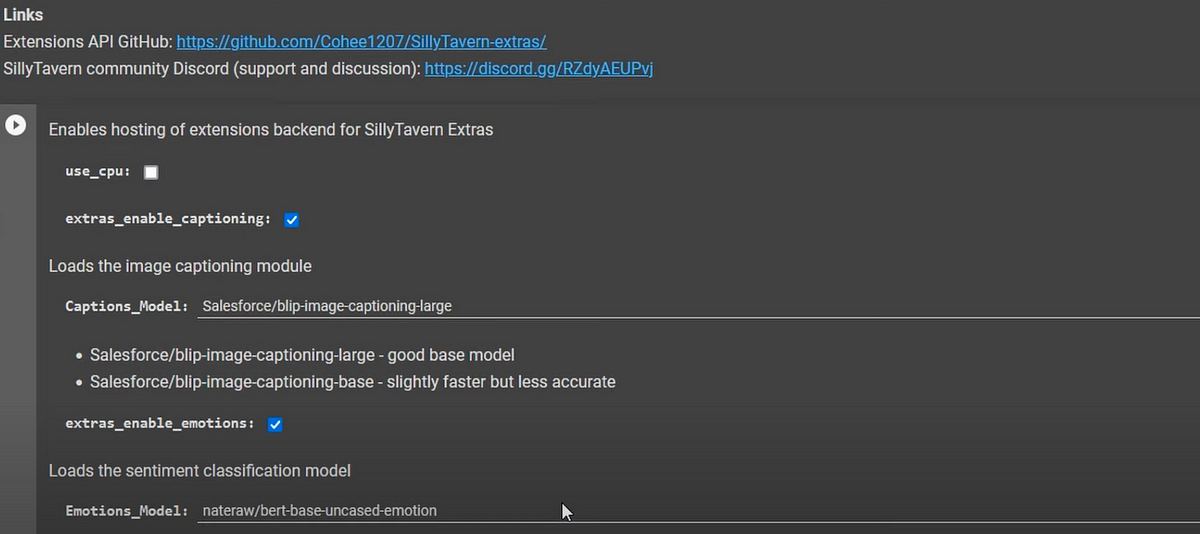
Step 2: Start installation and wait for the installation to finish.
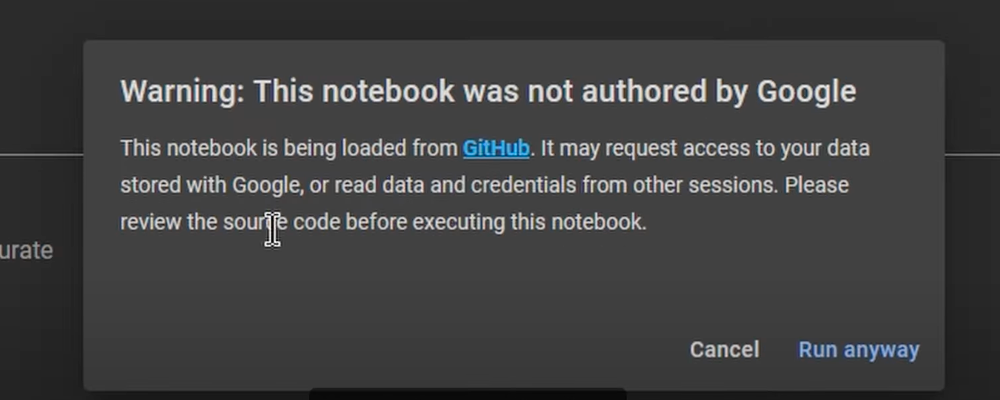
Step 3: After installation, you will receive a link, copy it.
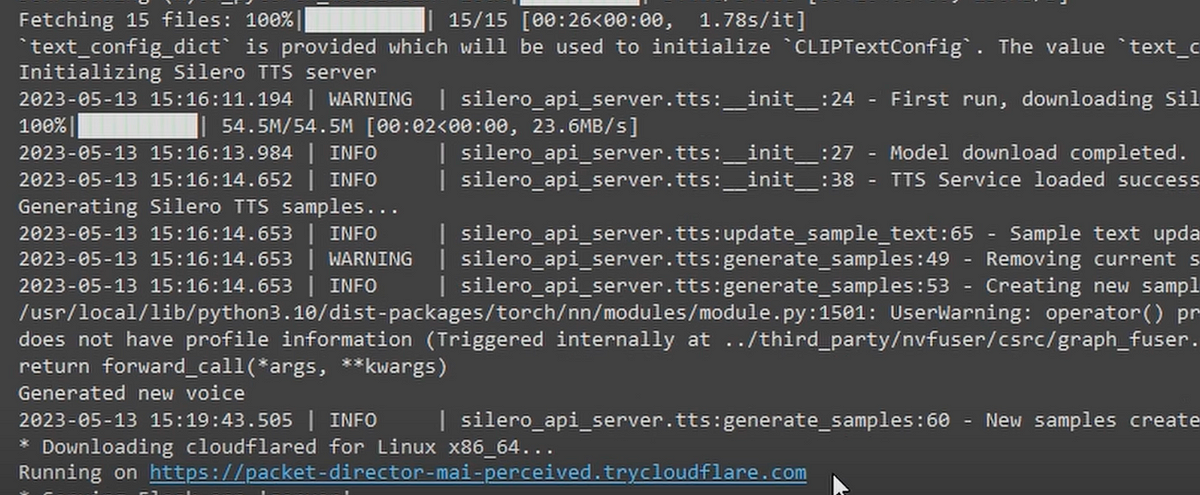
Step 4: Go to SillyTavern and paste this link, then connect to servers and you are ready to use extensions.
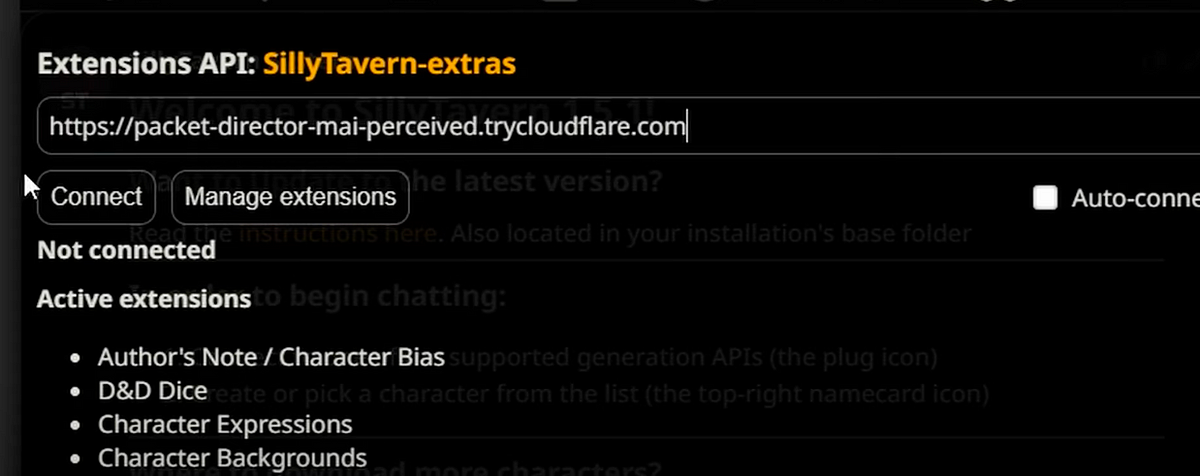
Step 5: Additionally, you can set up prompts for SD. To generate SD images just click on this icon and select action.
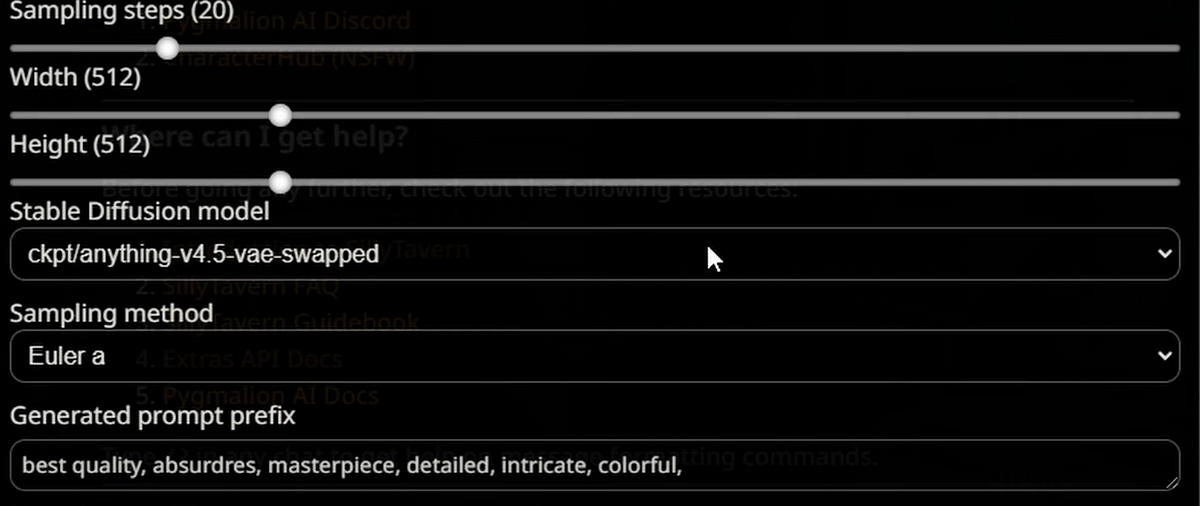
Step 6: Click “ Yourself ” bottom, even though it’s not the fastest process, it works well.


Tips for Smooth Operation
To optimize the functionality and performance of SillyTavern’s Stable Diffusion, incorporating best practices enhances the user experience. Practical tips ensure seamless operation and efficient functioning of the stable diffusion API. Implementing relevant guidance contributes to operational efficiency, thus improving the overall user experience. Guidance on achieving smooth operation is essential for optimizing the performance of SillyTavern’s Stable Diffusion, ensuring its seamless functioning.
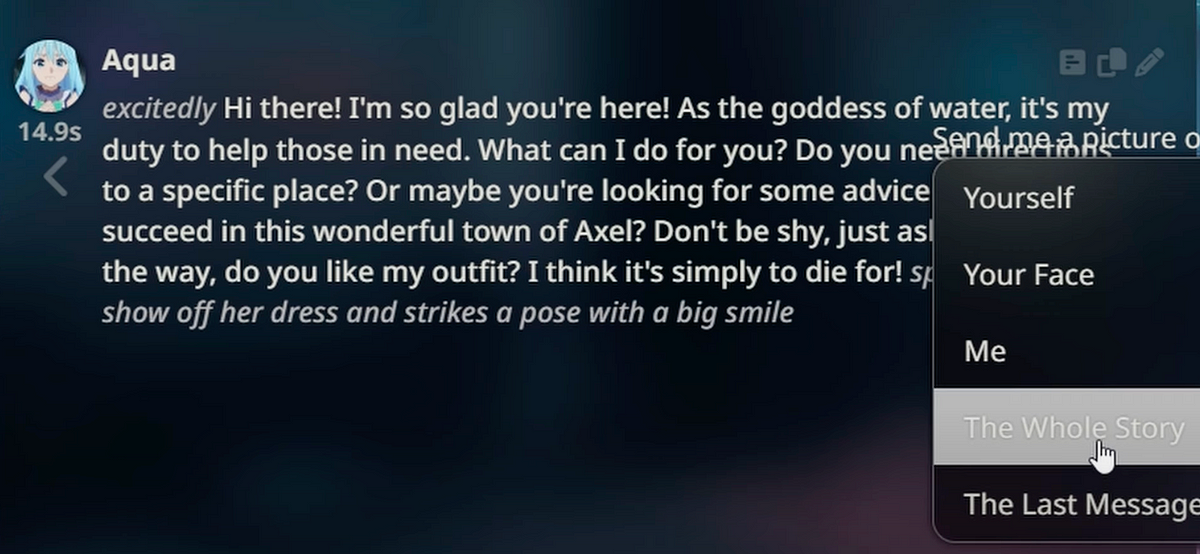

With extensions, you can send pictures to a character.


By the way, you can use novita.ai to generate images directly, just like this.
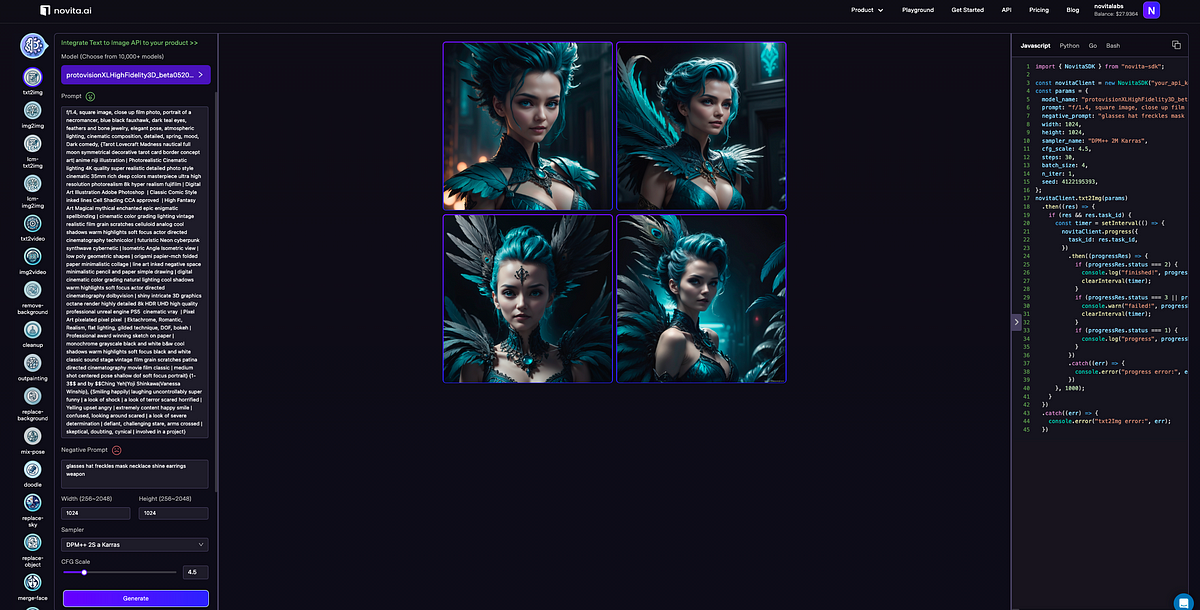
Can SillyTavern’s Stable Diffusion be used on Mobile/Android/Termux?
Exploring the accessibility of SillyTavern’s Stable Diffusion on mobile, Android, and Termux showcases its compatibility with various platforms. Leveraging this feature expands its user base and offers flexibility in usage. Additionally, installing an additional package enhances its functionality for mobile support.
Conclusion
In conclusion, SillyTavern’s Stable Diffusion offers a unique and exciting AI experience. With its advanced technology and user-friendly interface, it allows users to explore the world of AI in a fun and interactive way. The latest commit brings significant improvements to the AI fun aspect, making it even more enjoyable for users. The evolution of SillyTavern’s Stable Diffusion has been remarkable, with major milestones achieved along the way. Running SillyTavern’s Stable Diffusion is made easy with the step-by-step guide provided, and troubleshooting common errors is a breeze. Whether you’re a beginner or an experienced AI enthusiast, SillyTavern’s Stable Diffusion is a must-try. Start your AI journey today and unlock new possibilities with SillyTavern’s Stable Diffusion.
novita.ai provides Stable Diffusion API and hundreds of fast and cheapest AI image generation APIs for 10,000 models.🎯 Fastest generation in just 2s, Pay-As-You-Go, a minimum of $0.0015 for each standard image, you can add your own models and avoid GPU maintenance. Free to share open-source extensions.


